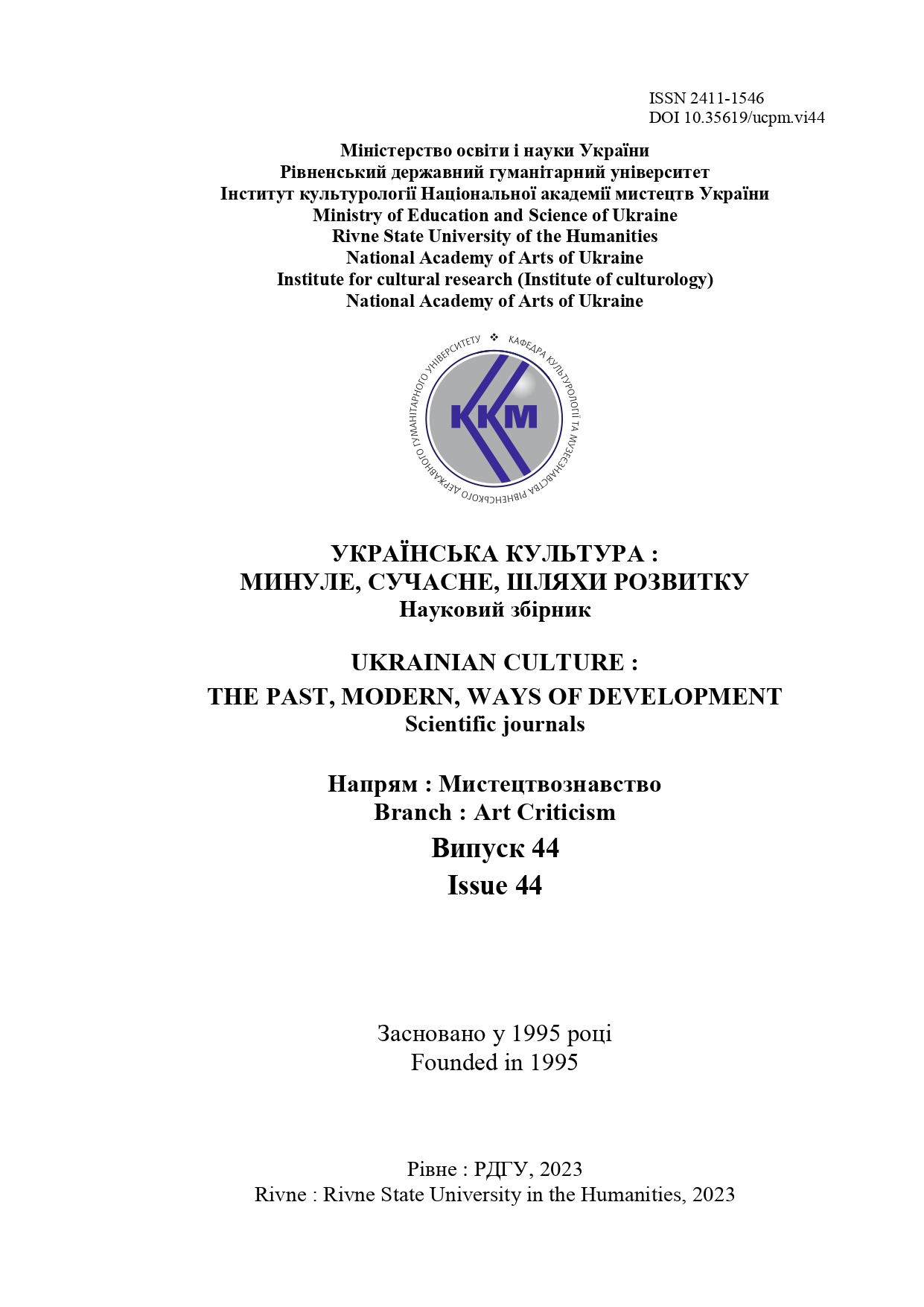«CONCERTINO»BY LEONID ZATULOVSKYI: INTERPRETATION OF THE GENRE
Abstract
The purpose of the article is to carry out a musicological analysis of Leonid Zatulovskyi‘s «Concertino» and to reveal the peculiarities of interpretation of the genre in his work. The novelty of the research consists in elucidating the features of the piano music of Bukovynian contemporary composer Leonid Zatulovskyi on the example of «Concertino» for piano and symphony orchestra.
Research methodology. When preparing the materials for the article, the following methods of scientific research were used: historical and cultural, theoretical and genre and style analysis. This made it possible to reveal the traditions and innovation of the composer‘s interpretation of the «concertino» genre.
Conclusions. In his Concertino, Leonid Zatulovskyi recreated the model of conflict-dramatic symphonism, imitating the best traditions of world and Ukrainian symphonic music, in particular, B. Lyatoshynskyi‘s. To implement his idea, the composer chose the «concertino» genre, examples of which can be found in Ukrainian music, in the works of V. Gubarenko and Zh. Kolodub. The one-part form of «Concertino» by L. Zatulovskyi showed signs of a cycle, which indicate its sonata-symphonic type. The work is clearly divided into four parts, where the first part shows the main contrasting images, their opposition and collision occurs. The second part contains a lyrical image embodied in the slow part. The third part contains an «aggressive» hard scherzo, and the fourth part shows a development that, in terms of content and character of presentation corresponds to solemn and exalted finale. The concertino also has signs of symphonic development: presence of reminiscences, cross-sectional development of themes, manifestations of monothematic combinations add to the general unity in form, in particular, they reproduce the logic of the dramatic concept of the work.Thus, the genre priorities of Leonid Zatulovskyi‘s works are rich and diverse, but one of the most important and brightest is the piano heritage, where the features of the composer‘s artistic style are clearly manifested.
Compositional thinking of the Bukovynian artist is characterized by a combination of original academicism with features of folk music, song and dance traditions. Academic principles are primarily related to genre models characteristic of Ukrainian music of the second half of the 20th century.At the same time, Zatulovskyi‘s works are distinguished by bright melodism, rhythmic character, original and virtuosic combination with modern trends and directions in musical art, in particular with jazz and instrumental improvisation. Therefore, musical art of Bukovyna, in particular the works of Leonid Zatulovskyi, maintaining close creative and stylistic ties with the traditions of various national cultures, demonstrates polystylistic nature of musical thinking of the region‘s composers.


